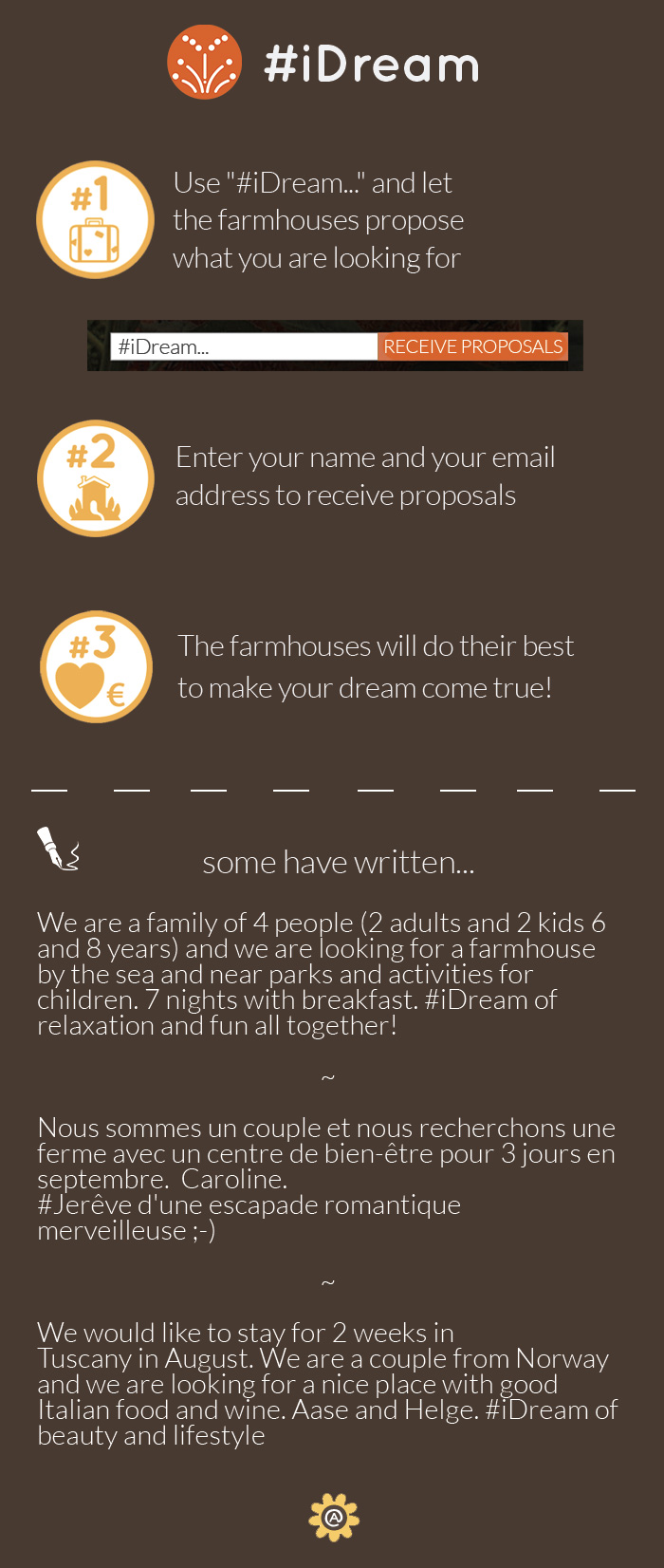


All the structures
Guide to vacation in Tuscany
Tuscany is one of the regions in Italy that attract the highest number of tourists most of all because of the great variety of environmental, scenic, artistic, cultural and historical attractions.
Starting from the north, lie Lunigiana with Pontremoli, the home of booksellers, and Fosdinovo, with its Malaspina beautiful castle (14th century), Castelvecchio (home of Giovanni Pascoli, the poet), and the Romanesque Pieve di Brancoli. Towards the east, lies the wooded Pistoia Mountain, with a host of summer holiday centres, such as S. Marcello, Gavinana and Maresca, and winter resorts, such as Cutigliano and Abetone.
Lucca is situated 19 m. above sea level on an alluvial plateau, to the left of the Serchio river, not far from the Tyrrhenian coast. An important road junction in Roman times, Lucca was the capital of the Lombard Duchy of Tuscia and subsequently (8th century) the seat of the Carolingian Marquisate of Tuscany. Established as a free municipality (early 12th century), the town grew in political and economical importance, though it was often troubled by internal disputes and rivalry with Pisa. In the first half of the 14th century, it was under various Signorie and in 1369 it became a Republic remaining independent, except during the Guinigi Signorie (1400-1430) and the Napoleonic period, until 1847 when it was included in the Grand Duchy of Tuscany, from then on sharing its fortunes.
Having reached Florence, a visit should be made to the Renaissance Franciscan monastery of Bosco dei Frati, with a wooden crucifix attributed to Donatello, the Medici villa of Cafaggiolo (15th century), Scarperia, with the 14th century Palazzo Pretorio, and Romanesque Borgo S. Lorenzo with the church of the same name.
The picturesque village of Vallombrosa is perched with its interesting monastery. Then the visitor reaches Casentino and Stia, Poppi and Bibiena, villages with a wealth of art and architecture. The Eremo di Camaldoli conserves the characteristic cells (11th century), the Verna monastery a 14th century church of S. Maria degli Angeli and Basilica (14th-16th century).
In the heart of the region, one finds splendid Volterra, of ancient Etruscan origin, with important monuments such as the Romanesque Duomo, 14th century Palazzo dei Priori and an extremely interesting Etruscan museum. Between Florence and Siena, lies S. Gimignano, famous for its many towers, the Collegiata (12th century), the Palazzo del Podestà (12th-13th century) and the Romanesque Gothic church of S. Agostino. Nearby and worth visiting is Colle Val d'Elsa, with Palazzo Campana, an example of Italian Mannerism (16th century).
Close to Siena stands the solitary magnificent abbey of Monte Oliveto Maggiore (14th-16th century) decorated with frescoes by L. Signorelli and Sodoma (Stories of St Benedict); farther on lie Montalcino, of medieval appearance with its beautiful Collegiata (12th-13th century), Montepulciano rich of late- Renaissance architecture and Pienza, built by Pope Pius II (1459-62) in the purest Renaissance urban style. Proceeding south, one reaches Radicofani and the tranquil holiday resorts at the base of Mount Amiata: these are Castel del Piano, Arcidosso, S. Fiora, Pian Castagnaio and Abbadia S. Salvatore.
Another interesting itinerary is the visit of Arezzo. From there one reaches the Val di Chiana, touching Monte San Savino, with its Renaissance Loggia dei Mercanti, the medieval hamlet of Gargonza and further on Cortona, originally one of the 12 cities if the Etruscan Confederation. Some Renaissance buildings, but most of all the medieval appearance, the steep and narrow streets create a very suggestive atmosphere. Churches and museums are rich of art and history.
Not to be missed, between Siena and Grosseto, are the solitary abbey of S. Galgano, one of the most important examples of Gothic-Cistercian architecture in Italy, and the beautiful town of Massa Marittima.
Farther on, towards the Tyrrhenian Sea, one enters Maremma, a protected area in the Maremma Natural Park, including the Monti dell'Uccellina, which has typical Mediterranean scrub, the ideal habitat for an extremely rich and varied fauna. Tourist movement is also linked to the seaside resorts: Marina di Massa, Marina di Carrara, Forte dei Marmi, Marina di Pietrasanta, Lido di Camaiore, Viareggio, exclusive Punta Ala, Castiglione della Pescaia, Marina di Grosseto, Porto S. Stefano and Porto Ercole. Not to be forgotten are the Islands: Elba with a particularly mild climate, Isola del Giglio and Isola della Capraia.
Internationally renowned health spas include Montecatini in the Nievole Valley and Chianciano in the lower Val di Chiana.